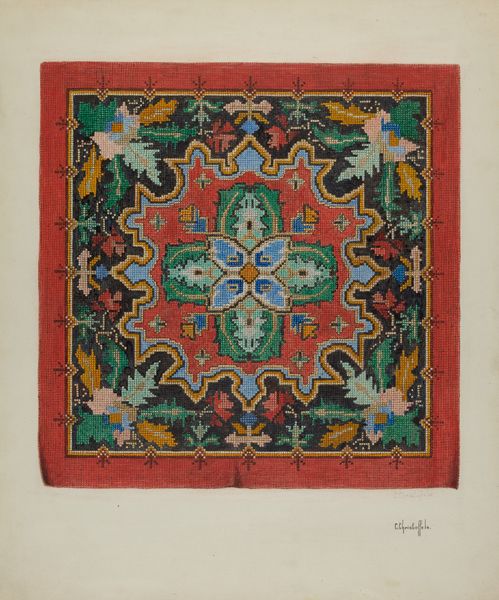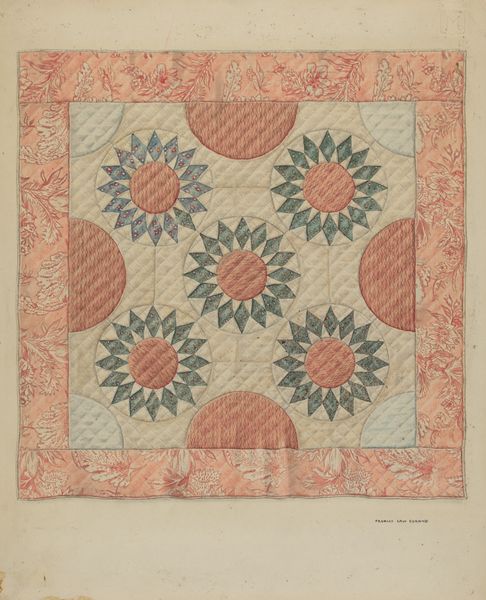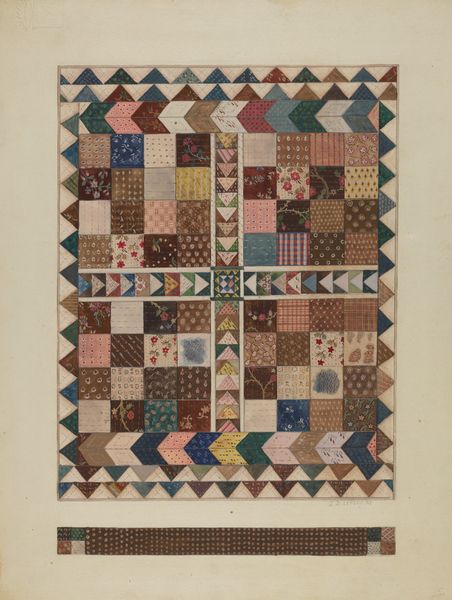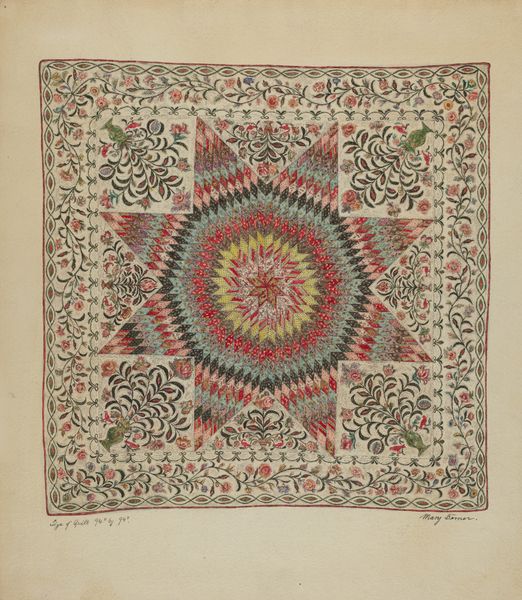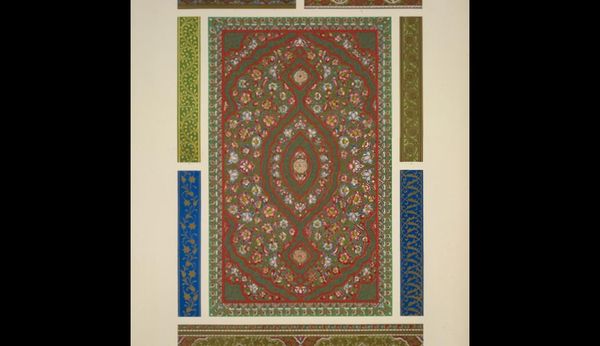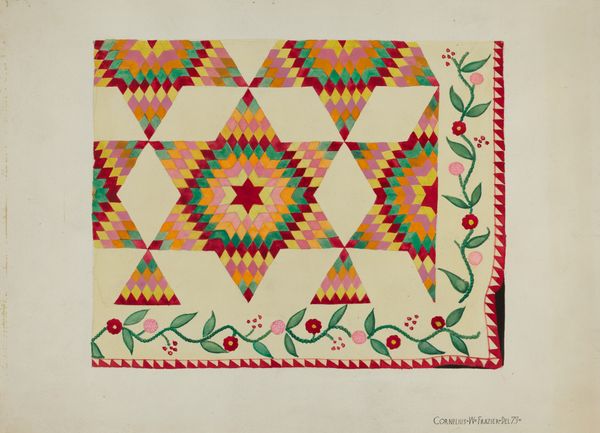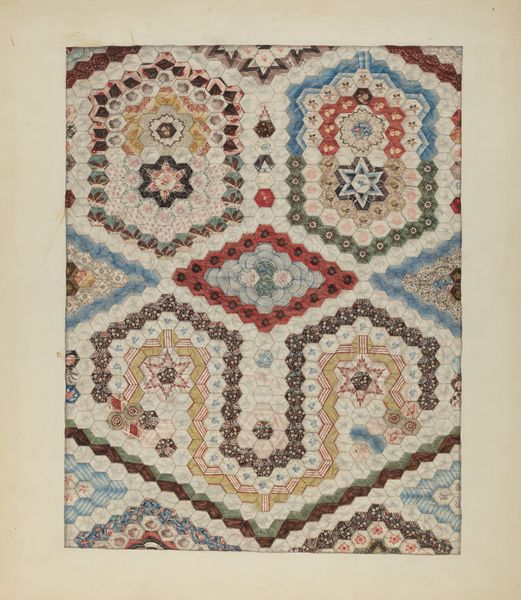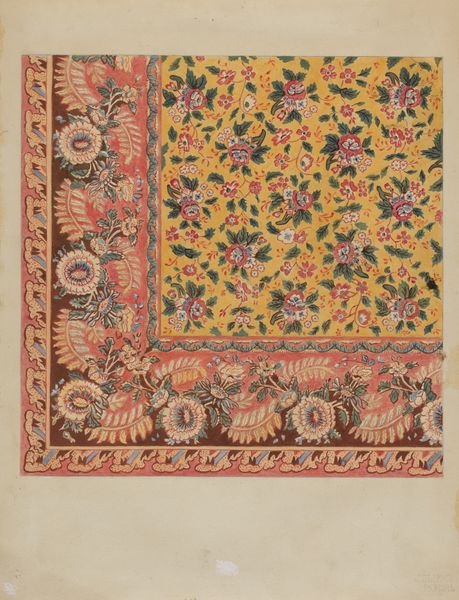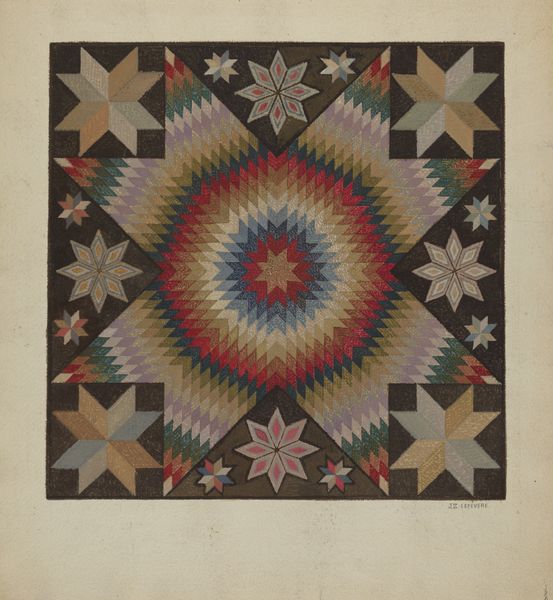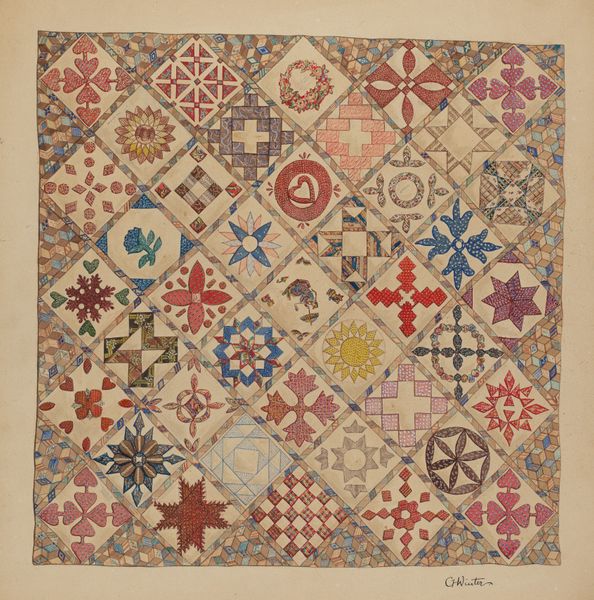
fibre-art, textile
#
fibre-art
#
textile
#
folk-art
#
geometric
#
ethnic design
Dimensions: overall: 28.9 x 22.4 cm (11 3/8 x 8 13/16 in.)
Copyright: National Gallery of Art: CC0 1.0
Curator: Suzanne Roy's "Crib Coverlet," dating to around 1936. It’s a drawing depicting what appears to be a textile piece. What are your initial thoughts? Editor: It’s interesting that this textile piece is being portrayed in drawing. My first impression is that this geometric and vibrant artwork is full of warmth and domesticity. It feels comforting and nostalgic, perhaps speaking to a time of handcrafted intimacy. Curator: Precisely. The work’s use of geometric shapes – squares, triangles, a central circular motif – taps into archetypal imagery and folk traditions where geometric forms hold protective and grounding properties. The symbol of a star may offer symbolic hope for the future or direction in times of darkness. What significance do you think these patterns may hold within a cultural context? Editor: Given the context of the Great Depression, such geometric design would represent making the most of scarce materials; that's an immediate aspect. Moreover, the fact that such work has a communal nature suggests it may embody cooperation in the face of hardship. Each individual patch serves to a larger purpose within the artwork itself. Curator: Absolutely. It reflects resourcefulness but also connection and heritage. These patterns have a sense of visual poetry—connecting generations. One could argue there are encoded memories embedded within. Editor: That sense of heritage makes me think about cultural production outside of mainstream institutions and highlights marginalized voices. This object, created perhaps for practical reasons, is laden with stories and acts as a symbol of resistance, reclaiming the labor of marginalized folks. The repetitive work also can be read as creating healing, almost a meditative form in the making. Curator: You make an astute point about repetition, the practice invites mindfulness, creating moments of stillness and contemplation for its maker as well as for its viewer. Each pattern a gentle nod to the human experience. Editor: Viewing the artwork from my perspective I see that it acts as a subtle reminder of the ongoing need for economic and gender equality; the work may function as a visual protest or as quiet defiance. It embodies beauty amidst hardship, resistance in the face of power imbalances. Curator: Reflecting on "Crib Coverlet," I am moved by the rich narrative sewn into each thread. Editor: I echo those sentiments. The work becomes more than meets the eye—a testament to resilience, innovation, and shared humanity, stitched through time.
Comments
No comments
Be the first to comment and join the conversation on the ultimate creative platform.
